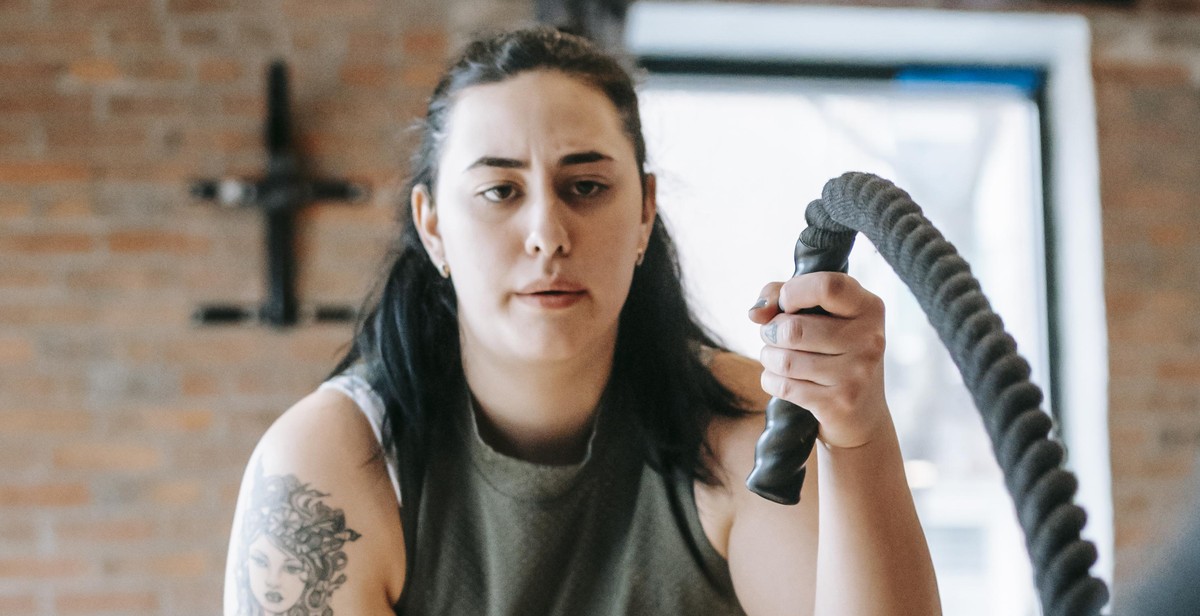How to Start a Skipping Rope Workout Routine for Cardio and Conditioning
Skipping rope is an excellent and inexpensive way to get in shape. It’s a simple, yet effective workout that can help you burn calories, improve your cardio, and strengthen your entire body. Whether you’re new to skipping rope or looking to add it to your existing workout routine, this guide will provide you with everything you need to know to get started.
The Benefits of Skipping Rope
Skipping rope is a low-impact workout that can provide numerous benefits for your health and fitness. Here are just a few:
- Burns calories and aids in weight loss
- Improves cardiovascular health and endurance
- Strengthens muscles in the legs, core, and arms
- Improves coordination and balance
- Can be done anywhere, anytime
- Requires minimal equipment and is inexpensive
Getting Started
Before you begin your skipping rope workout routine, there are a few things to keep in mind:
- Choose the right rope: Look for a rope that is the right length for your height and weight. A good rule of thumb is to stand on the rope with both feet and make sure the handles reach your armpits.
- Wear the right shoes: Choose shoes with good cushioning and support to reduce the impact on your joints.
- Start slow: Begin with short intervals and gradually increase the duration and intensity of your workout.
- Stay hydrated: Drink plenty of water before, during, and after your workout.
A Sample Skipping Rope Workout Routine
Here’s a sample skipping rope workout routine to get you started:
| Exercise | Duration | Repetitions |
|---|---|---|
| Basic jump | 30 seconds | 10 |
| Double unders | 30 seconds | 10 |
| High knees | 30 seconds | 10 |
| Side-to-side | 30 seconds | 10 |
| Rest | 30 seconds | – |
Repeat this circuit 3-4 times for a full workout.
Now that you have the basics, it’s time to grab your rope and get jumping. With consistency and dedication, you’ll be on your way to a healthier, fitter you in no time.

Benefits of Skipping Rope
Skipping rope is a highly effective workout routine that provides numerous health benefits. Here are some of the key benefits of including skipping rope in your cardio and conditioning workout:
Cardiovascular Health
Skipping rope is an excellent cardio exercise that can significantly improve your cardiovascular health. It increases your heart rate, which strengthens your heart and lungs, and improves blood circulation throughout your body. Regular skipping rope workouts can reduce the risk of heart disease, stroke, and other cardiovascular conditions.
Weight Loss
Skipping rope is a high-intensity workout that burns a lot of calories in a short amount of time. It can help you lose weight, especially when combined with a healthy diet. Skipping rope burns more calories than running, making it an ideal exercise for weight loss.
Improved Coordination and Balance
Skipping rope requires coordination and balance, which can improve over time with regular practice. It engages various muscle groups, including your core, legs, and arms, to maintain balance and coordination. Improved coordination and balance can help prevent falls and injuries, especially in older adults.
Muscle Toning and Endurance
Skipping rope is a full-body workout that engages multiple muscle groups, including your legs, arms, core, and shoulders. It can help tone and strengthen your muscles, especially your calves, hamstrings, and quadriceps. Regular skipping rope workouts can also improve your endurance, allowing you to perform other physical activities with ease.
| Benefits of Skipping Rope |
|---|
| Cardiovascular Health |
| Weight Loss |
| Improved Coordination and Balance |
| Muscle Toning and Endurance |

Choosing the Right Skipping Rope
When it comes to starting a skipping rope workout routine, choosing the right rope is essential. Here are some factors to consider:
Length
The length of your skipping rope is important as it affects how the rope moves and how efficient your workout is. To determine the correct length for you, step on the middle of the rope with one foot and bring the handles up towards your armpits. The handles should reach just below your armpits. If the handles are too long, adjust the length accordingly.
Weight
The weight of the rope affects how quickly it rotates and how intense your workout is. Heavier ropes provide more resistance and are better for building strength, while lighter ropes are better for speed and endurance. Consider your fitness goals and choose a rope weight accordingly.
Material
Skipping ropes can be made of various materials, including plastic, leather, and wire. Plastic ropes are lightweight and durable, but may not last as long as other materials. Leather ropes are durable and provide a good grip, but can be heavier. Wire ropes are lightweight, fast, and durable, but can be more difficult to control. Consider your skill level and workout goals when choosing a material.
| Factor | Considerations |
|---|---|
| Length | Handles should reach just below armpits |
| Weight | Consider fitness goals and choose weight accordingly |
| Material | Consider skill level and workout goals when choosing material |

Basic Skipping Techniques
Before diving into a skipping rope workout routine, it’s important to master the basic skipping techniques. These techniques not only improve your coordination and agility but also help you build a solid foundation for more advanced moves.
The Basic Bounce
The basic bounce is the most fundamental skipping technique and involves jumping with both feet together while swinging the rope under your feet and over your head. Start with a slow and steady pace, and as you get comfortable, increase your speed. Remember to keep your elbows close to your body and use your wrists to turn the rope.
The Double Under
The double under is a more advanced technique that requires you to jump twice for every one rope swing. To perform this move, jump slightly higher than usual and quickly spin the rope twice under your feet. This technique requires more coordination and timing but can help improve your cardiovascular endurance.
The Criss-Cross
The criss-cross technique involves crossing your arms in front of your body as you jump. As the rope swings over your head, uncross your arms and jump through the loop. This technique is great for improving your coordination and agility.
The Side Swing
The side swing involves swinging the rope to the side instead of over your head. Jump to the side as the rope swings under your feet and over your shoulder. This technique helps improve your lateral movement and coordination.
| Technique | Description |
|---|---|
| Basic Bounce | Jump with both feet together while swinging the rope under your feet and over your head. |
| Double Under | Jump twice for every one rope swing. |
| Criss-Cross | Cross your arms in front of your body as you jump. |
| Side Swing | Swing the rope to the side instead of over your head. |

Creating a Workout Routine
Before jumping into a skipping rope workout routine, it’s important to create a plan that includes warm-up, skill-building drills, interval training, and cool down. Here’s how to create a workout routine that will help you achieve your cardio and conditioning goals:
Warm-Up
A proper warm-up is essential to prepare your body for the workout ahead. Begin with a few minutes of light cardio, like jogging or jumping jacks, to get your heart rate up. Then, focus on dynamic stretches that target the muscles you’ll be using during the workout. This can include leg swings, arm circles, and lunges. Aim for 5-10 minutes of warm-up exercises.
Skill Building Drills
Next, focus on skill building drills to improve your skipping technique and build coordination. This can include basic jumps, single leg jumps, double unders, and crossovers. Start with the basics and gradually increase the difficulty as you improve your skills. Aim for 10-15 minutes of skill building drills.
Interval Training
Interval training is the core of a skipping rope workout routine. It involves alternating periods of high-intensity skipping with periods of rest or lower intensity skipping. This can include intervals of 30 seconds of fast skipping followed by 30 seconds of rest, or 1 minute of high-intensity skipping followed by 1 minute of low-intensity skipping. Repeat for 10-20 minutes, depending on your fitness level.
Cool Down
After completing your interval training, it’s important to cool down and stretch your muscles to prevent injury and reduce soreness. Focus on static stretches that target the muscles used during the workout, like hamstring stretches, quad stretches, and shoulder stretches. Aim for 5-10 minutes of cool down exercises.
By following this workout routine, you can improve your skipping technique, build your cardio endurance, and achieve your fitness goals.

Tips for Success
Starting a skipping rope workout routine can be a challenging task, but with the following tips, you can ensure success:
Start Slowly and Progress Gradually
It’s important to start your workout routine slowly and progress gradually to avoid injury and burnout. Begin with shorter sessions and lower intensity and gradually increase the duration and intensity of your workout as your fitness level improves. This will help you build a solid foundation and avoid overexertion.
Mix It Up
Keep your workout routine interesting and challenging by mixing it up. Incorporate different types of skipping techniques, such as single leg hops, double unders, and crisscrosses, to keep your body guessing and prevent plateauing. Additionally, you can add other cardio and conditioning exercises, such as running, jumping jacks, and lunges, to increase the intensity and variety of your workout.
Stay Consistent
Consistency is key to achieving success in any workout routine. Make a plan and stick to it, even on days when you don’t feel motivated. Skipping rope is a great cardiovascular exercise that can be done anywhere, so there are no excuses for missing a workout. Aim to skip rope at least three to four times a week for optimal results.
Listen to Your Body
It’s important to listen to your body and take breaks when necessary. If you experience pain or discomfort during your workout, stop immediately and rest. Pushing through pain can lead to injury and setbacks. Also, make sure to stretch before and after your workout to prevent muscle soreness and tightness.
| Tips for Success: |
|---|
| Start Slowly and Progress Gradually |
| Mix It Up |
| Stay Consistent |
| Listen to Your Body |

Conclusion
Starting a skipping rope workout routine is an excellent way to improve your cardiovascular fitness and overall conditioning. Skipping rope is an inexpensive, convenient, and effective form of exercise that can be done anywhere, anytime.
When starting your skipping rope workout routine, it’s important to begin slowly and build up gradually. Start with shorter sessions and fewer repetitions, and gradually increase the duration and intensity of your workouts as your fitness level improves.
Remember to warm up before each skipping rope workout and cool down afterward to prevent injury and aid recovery. Incorporate a variety of skipping rope exercises into your routine to keep it interesting and challenge your body in different ways.
As with any exercise program, it’s important to listen to your body and not push yourself too hard. If you experience pain or discomfort, stop and rest, and consult a healthcare professional if necessary.
By following these tips and incorporating skipping rope workouts into your fitness routine, you can improve your cardiovascular health, increase your endurance, and boost your overall fitness and well-being.
So grab a skipping rope, put on some music, and get skipping!
